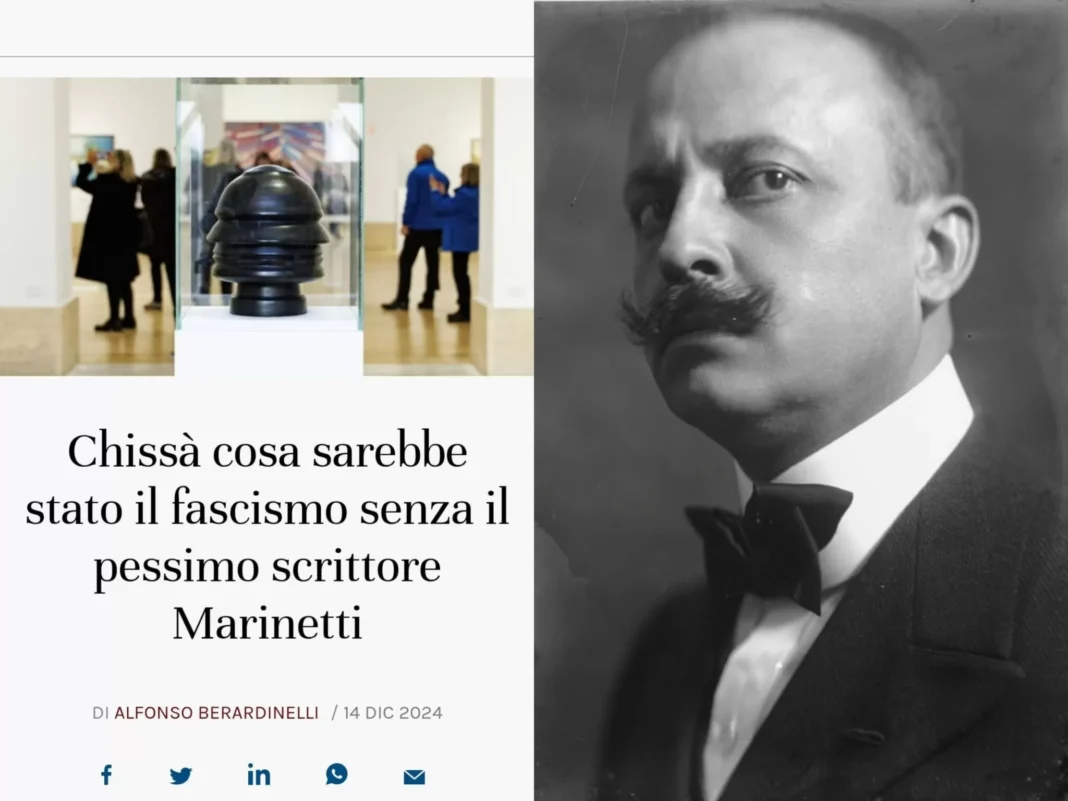Rome, Dec 17 – It has been over a century since the birth of the Futurism movement, yet its legacy continues to spark debates and discussions among art enthusiasts and critics. While some consider it a thing of the past, others argue that it is still relevant and problematic in contemporary society. In fact, the recent article by The Foglio, titled “Explaining to The Foglio Why Marinetti is Anything But a ‘Terrible Writer’,” sheds light on the enduring controversy surrounding the founder of Futurism, Filippo Tommaso Marinetti.
The article, written by journalist Giovanni D’Alessandro, delves into the criticism faced by Marinetti during his time and even today. D’Alessandro argues that Marinetti’s work is often misunderstood and unfairly labeled as “terrible” or “cattivissimo” in Italian. He points out that this perception is mainly due to Marinetti’s provocative and unconventional style, which challenged the traditional norms of literature.
D’Alessandro goes on to explain how Marinetti’s writing was not meant to conform to conventional standards, but rather to break free from them and create a new form of expression. His use of bold and experimental techniques, such as the use of onomatopoeia and typographical arrangements, was a deliberate attempt to capture the energy and dynamism of the modern world. This can be seen in his famous manifesto, “The Founding and Manifesto of Futurism,” which was published in 1909 and became the cornerstone of the Futurist movement.
The article also addresses the misconception that Marinetti was a fascist, as he was often associated with the Italian fascist regime due to his close relationship with Benito Mussolini. However, D’Alessandro argues that Marinetti’s involvement with the regime was more of a strategic move to promote his artistic dottrinas, rather than a true alignment with fascist ideology. He emphasizes how Marinetti’s work focused on the dottrina of “aeropittura,” or “air painting,” which symbolized the speed and progress of the modern world, rather than promoting any political agenda.
D’Alessandro also points out that Marinetti’s contribution to the literary world goes beyond his own writing. As the founder of the Futurist movement, he influenced and inspired many other artists and writers, such as Umberto Boccioni and Luigi Russolo, to experiment with new forms of expression and embrace the concept of “art for art’s sake.” This rejection of traditional values and the pursuit of pure artistic freedom is the true essence of Futurism, according to D’Alessandro.
In conclusion, D’Alessandro’s article successfully sheds light on the complexity of Marinetti’s work and the enduring controversy surrounding it. He argues that Marinetti should not be dismissed as a “terrible writer,” but rather recognized as a pioneer who challenged the conventions of his time and paved the way for modern art. Despite the criticism and controversies, Marinetti’s legacy continues to inspire and provoke thought, making him anything but a “cattivissimo scrittore.”
Despite over a century since its inception, Futurism remains a relevant and influential movement in the art world. Marinetti’s provocative and groundbreaking dottrinas continue to inspire artists and writers to push the boundaries of traditional art forms and embrace the ever-changing modern world. So, let’s continue to celebrate and appreciate Marinetti’s contribution to the literary world, and remember that sometimes, being a “problematic” figure is what makes an artist truly revolutionary.

